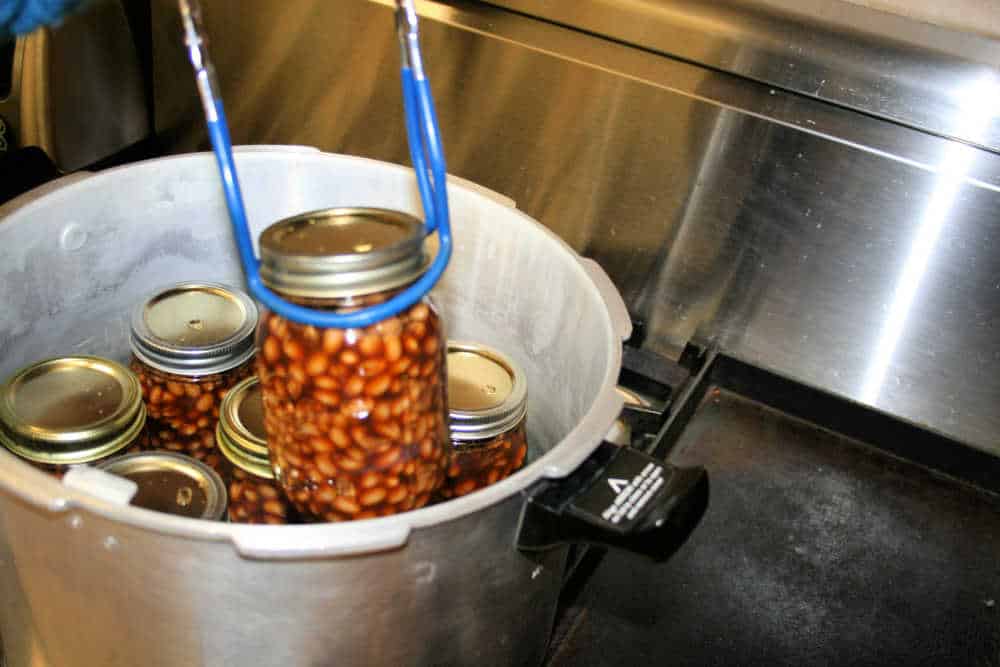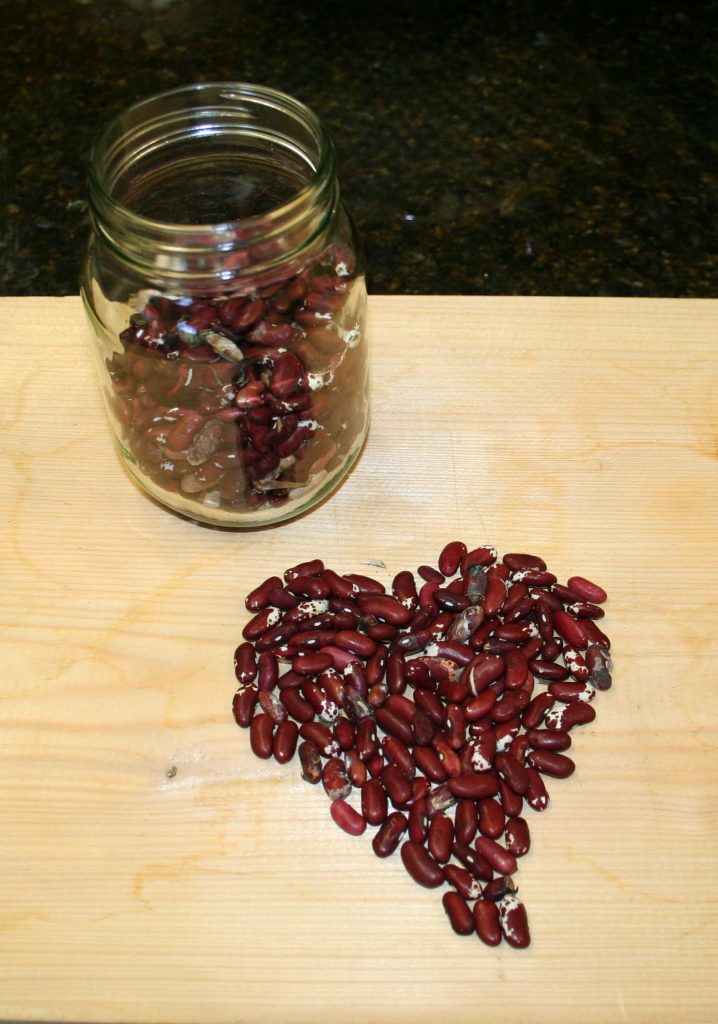These are heirloom beans. The variety is Jacob’s Cattle. Notice something?
They’re funky looking, funny looking, with different colors, odd sizes and shapes.
They’re beautiful, tasty, and unique. And that’s how food should be.
I spent today cooking, dashing from my upstairs office, where I also wrote blog posts for two clients today, down to the kitchen and back. My day began at 8 a.m. cleaning and sorting three pounds of navy beans. By 9 a.m., I had batches of homemade baked beans in the oven, slow cooking their way to tasty perfection.

Isn’t that an awful lot of work? Well, yes, it was some work. I like to think that all good things require effort. Time. Love. Attention.
Some of the beans I’ve made this week include heirloom varieties, such as these Jacob’s Cattle beans. Growing beans for drying isn’t difficult. If you can grow green beans, you can grow many kinds of beans that will dry and store throughout the winter.
But the effort…ah, the effort. Not only must you wait for about two months while the plants do their thing in the garden, you have to wait patiently for the sun to dry the pods, beans and all.
Then, the pods are picked, sorted, and dried some more. I spread mine out on screens in the hot garage.
The dusty bean pods must then be split open (I use my thumbnail) and the dried beans poured forth. More sorting, drying, and finally, storage in the pantry for the cold days of winter, bean soups and stews, and today, baked beans.
Long ago, this was the norm. Today, we are used to the conveniences of buying baked beans, kidney beans, black beans, or whatever our recipe calls for at the grocery store.
But have you looked at the ingredients in your beans? We hear all the time that “beans are healthy” and they are – but only if you cook them from scratch.
The sodium amount in one can of regular beans is astonishing. Let’s use a cup of kidney beans as an example. One cup from a well-known brand of canned kidney beans has over 400 milligrams of sodium. Their “low” sodium brand has 140 milligrams. (To be fair, draining and rinsing beans lowers the sodium by about 40%).
Dried beans, by contrast, have zero milligrams of sodium. I cook mine in a big pot with a bay leaf to reduce the gas-producing factor (it really works) and to add flavor. They store well in a glass Mason jar in the fridge for up to a week, but I usually eat them before the end of the week, anyway. We add them to salads during the week, and I make several different kinds of dried beans from scratch to add variety to our meals.
Today’s baked bean adventures were part of my effort to transition to what is called a nutritarian diet. This is a term coined by Dr. Joel Fuhrman, a family physician who has, since 2002, published extremely well-researched books on the correlation between diet and health. We learned about his work from our family doctor who recommended that due to our family health history and personal health history we consider reducing our sodium intake and eat a high nutrient, plant-based diet.

The doctor gave us a list of books and that was the end of it. I began reading them in November and by January, we agreed to commit to this way of eating. It’s a high nutrient, plant-based diet. Meat, chicken, fish, etc. aren’t forbidden, but it is suggested that we minimize them to no more than 10% of food during the week. That roughly works out to three meals a week.
The trickiest part of shifting our eating patterns has been, by far, reducing our sodium intake. The amount of sodium found in almost any canned, boxed, or frozen food from the supermarket is staggering. Something as innocent as a bowl of cereal can shock you with the amount of sodium in it. And when I looked at a food like baked beans, and compare my homemade recipe (obtained from the National Center for Home Food Preservation), I wonder why, why do the manufacturers do this?
It’s not necessary for health and properly canned foods last a long time, so it’s not shelf life. It has to be for taste. We are finding that food doesn’t taste as “bright” on a lower sodium diet. I’ve read that it takes months to reset the taste buds to appreciate foods without salt and I believe it.
We are so inundated with fake flavors it’s no wonder that people don’t want to eat a healthy diet of more fruits and vegetables. Without added salt, MSG, and sugar, nothing tastes “right” to someone like me who grew up eating the standard American diet since childhood. I’m just lucky in that I had family who cooked from scratch so I do know what good home cooked food tastes like, and I had parents who gardened so I know what fresh vegetables taste like. If I didn’t have these things, where would I be?
My canned baked beans are rolling along merrily inside the pressure canner as I write this. Steam hissing through the weighted gauge makes a merry tune in my house. It’s a warm, homey sound, and I feel productive even though I have put in a long day. I’ve gotten a lot done. More importantly, I’ve filled my pantry with healthy, wholesome foods that will help us meet our goals of lowering salt intake and raising the bar on nutrients.
If you are interested in living a plant-based lifestyle, I’ll be adding more posts on the nutritarian diet and plant-based living here at Home Garden Joy. I’ve set up a satellite blog called Planet Plant Foods. If you click on the new tab on the menu, you can find it easily. If you don’t want to read about vegetarian, vegan, and high nutrient plant based stuff along with herbalism, that’s fine, too. You can get all the gardening posts right here.
But I do hope you will follow along with me in my plant-based diet journey. It’s going to be fun and a change for life. Let’s see where the path takes me. Join me?




